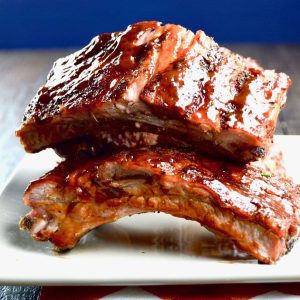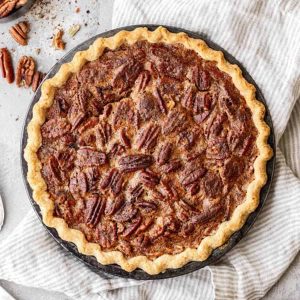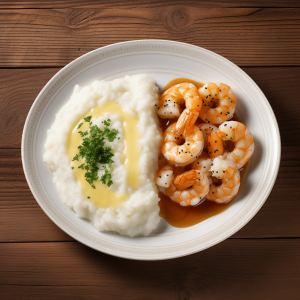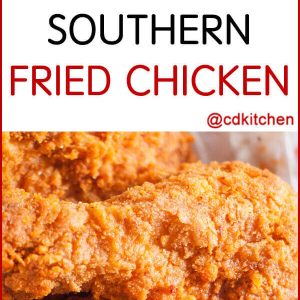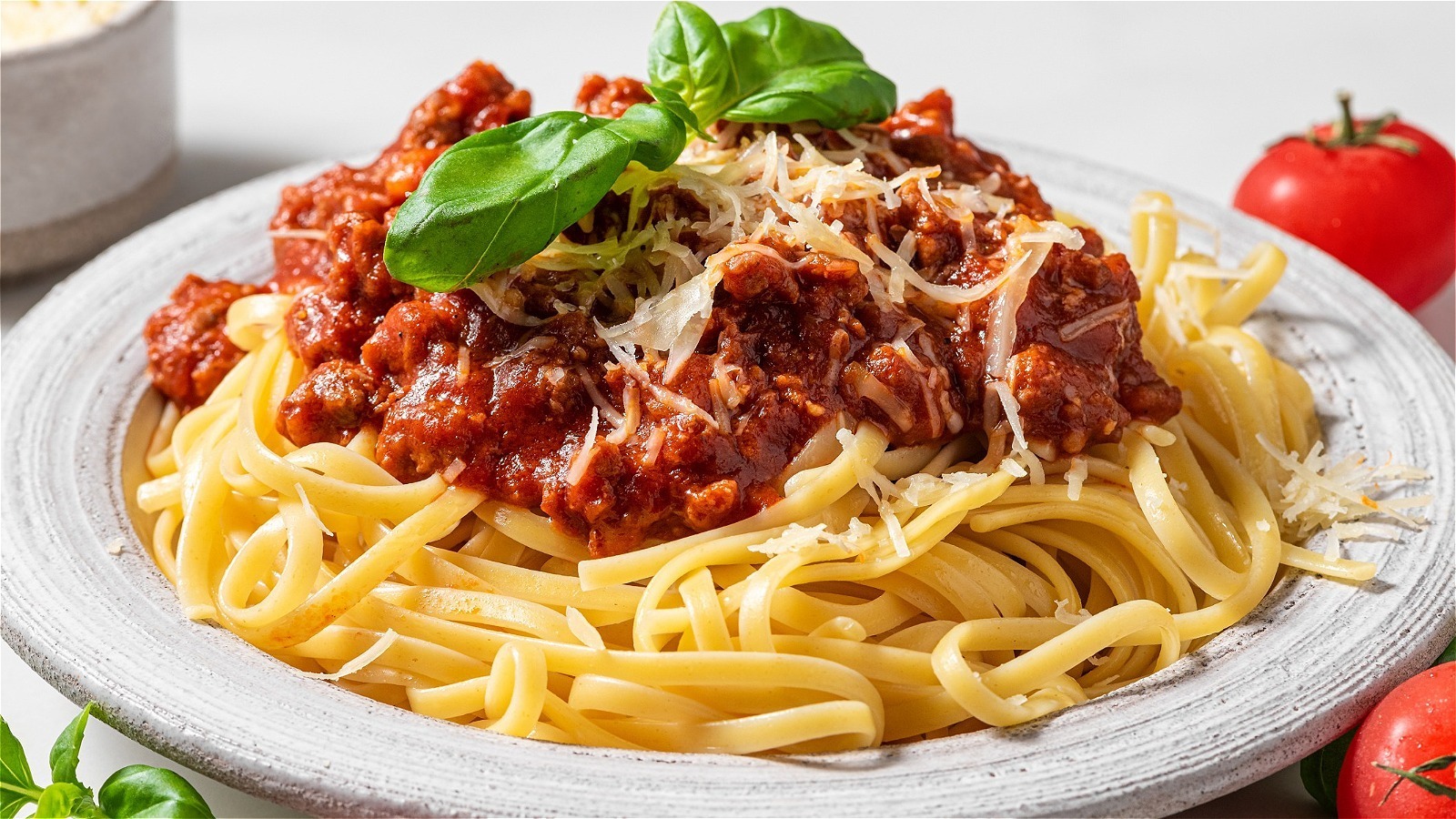
Southern Pantry Staples: Building a Foundation for Authentic Flavor
The South. A land steeped in history, tradition, and, most importantly, flavor. More than just recipes, Southern cooking is a soulful expression of place, a culinary dialect spoken through generations. And at the heart of this dialect lies the Southern pantry – a meticulously curated collection of ingredients that forms the bedrock of authentic Southern flavor. Building this foundation is key to unlocking the true potential of Southern cuisine. So, let’s roll up our sleeves and delve into the essential components of a well-stocked Southern pantry, exploring not just what they are, but why they are vital.
The Cornerstones: Fats, Flours, and Grains
Before we even think about the sizzle of a shrimp or the sweetness of a peach cobbler, we need to address the foundational elements. These are the unsung heroes that bind dishes together, lending texture, richness, and that unmistakable Southern charm.
- Lard: This isn’t your grandmother’s health villain. Lard, rendered pork fat, imparts a distinctive richness and flakiness to biscuits and pie crusts that butter simply cannot replicate. Its high smoke point also makes it excellent for frying. While rendered hog fat is considered superior, refined lard available in supermarkets can be good for all purposes.
- Shortening: Another vital fat, vegetable shortening offers a neutral flavor and exceptional tenderness to baked goods. Think melt-in-your-mouth sugar cookies and perfectly crumbly cornbread.
- All-Purpose Flour: A workhorse in any kitchen, all-purpose flour is the backbone of Southern baking. From gravies to dredging, its versatility is unmatched.
- Self-Rising Flour: This is where things get interesting. Self-rising flour, pre-mixed with baking powder and salt, is a Southern baker’s secret weapon. It simplifies biscuit-making and ensures a light, airy texture.
- Cornmeal: Essential for cornbread, hushpuppies, and grits, cornmeal comes in different textures (fine, medium, and coarse). Stone-ground cornmeal retains more of the corn’s natural oils and flavor.
Quick Reference: Fats, Flours, and Grains
| Staple | Purpose | Flavor Profile |
|---|---|---|
| Lard | Frying, baking (biscuits, pie crusts) | Rich, savory |
| Shortening | Baking (cookies, cornbread) | Neutral |
| All-Purpose Flour | Baking, thickening gravies | Mild |
| Self-Rising Flour | Biscuits, quick breads | Slightly salty (due to baking powder and salt) |
| Cornmeal | Cornbread, grits, hushpuppies | Earthy, corny |
The Flavor Brigade: Spices, Herbs, and Seasonings
The Southern pantry sings with a chorus of spices and herbs, each contributing a unique note to the symphony of flavor. These aren’t just afterthoughts; they’re integral to the identity of Southern cuisine.
- Cayenne Pepper: A fiery kick that adds depth and complexity to everything from fried chicken to collard greens.
- Paprika: Smoked paprika is especially prized for its smoky, slightly sweet flavor. It’s a key ingredient in barbecue rubs and stews.
- Garlic Powder/Granulated Garlic: Southern cooking embraces garlic in all its forms. Garlic powder and granulated garlic offer convenience and consistent flavor.
- Onion Powder: Like garlic powder, onion powder provides a concentrated onion flavor, perfect for seasoning meats and vegetables.
- Dried Thyme: A versatile herb that adds a subtle earthy note to savory dishes.
- Dried Oregano: Another essential herb, oregano provides a slightly peppery flavor that complements many Southern dishes.
- Bay Leaves: Aromatic bay leaves infuse slow-cooked dishes like stews and braises with a subtle, complex flavor. Remember to remove them before serving!
- Salt and Pepper: These are the cornerstones of any kitchen, but in the South, they’re used with intention and generosity. Kosher salt is preferred for its clean flavor.
- Hot Sauce: No Southern pantry is complete without a bottle (or several) of hot sauce. From vinegar-based sauces to thicker, pepper-laden varieties, hot sauce is a staple condiment.
- Worcestershire Sauce: A umami-rich sauce that adds depth and complexity to marinades, sauces, and stews.
Essential Spices and Herbs for the Southern Pantry
| Staple | Flavor Profile | Common Uses |
|---|---|---|
| Cayenne Pepper | Spicy, hot | Fried chicken, collard greens, stews |
| Paprika | Smoky, slightly sweet | Barbecue rubs, stews |
| Garlic Powder | Garlicky, pungent | Seasoning meats, vegetables |
| Onion Powder | Oniony, slightly sweet | Seasoning meats, vegetables |
| Dried Thyme | Earthy, subtle | Braises, stews, poultry |
| Dried Oregano | Peppery, slightly bitter | Sauces, stews, meats |
| Bay Leaves | Aromatic, complex | Stews, braises, soups |
| Hot Sauce | Varies (vinegary, spicy, fruity) | Condiment, seasoning meats, vegetables |
| Worcestershire Sauce | Umami-rich, savory | Marinades, sauces, stews |
The Sweet Spot: Sugars, Syrups, and Molasses
Southern desserts are legendary, and a well-stocked pantry ensures you’re always ready to whip up a comforting treat.
- Granulated Sugar: The all-purpose sweetener for baking, cooking, and sweetening beverages.
- Brown Sugar: Adds a molasses-like flavor and moistness to baked goods.
- Powdered Sugar: Perfect for dusting desserts and making frostings.
- Molasses: Adds a deep, rich flavor to cookies, cakes, and barbecue sauces. Blackstrap molasses has the most intense flavor.
- Honey: A natural sweetener with a floral flavor.
- Corn Syrup: Used in some Southern recipes to prevent crystallization and add a smooth texture.
- Maple Syrup: While not strictly Southern, maple syrup is increasingly used in Southern cuisine for its unique flavor.
Sweet Southern Sensations: Sugars and Syrups
| Staple | Flavor Profile | Common Uses |
|---|---|---|
| Granulated Sugar | Sweet, neutral | Baking, cooking, sweetening beverages |
| Brown Sugar | Molasses-like, moist | Cookies, cakes, barbecue sauces |
| Powdered Sugar | Sweet, delicate | Dusting desserts, making frostings |
| Molasses | Deep, rich, slightly bitter | Cookies, cakes, barbecue sauces, gingerbread |
| Honey | Floral, sweet | Sweetening beverages, drizzling on desserts, marinades |
The Preservation Station: Pickles, Preserves, and Pantry Staples
Preservation has always been a cornerstone of Southern cuisine, allowing cooks to extend the bounty of the harvest throughout the year.
- Pickled Okra: A tangy, crunchy snack that embodies Southern flavor.
- Pickled Peaches: A sweet and savory treat that’s perfect with cheese or grilled meats.
- Jams and Preserves: Peach jam, muscadine jelly, and fig preserves are just a few examples of the delicious ways Southerners preserve fruit.
- Canned Tomatoes: Essential for sauces, stews, and soups.
- Canned Beans: Pinto beans, black-eyed peas, and butter beans are staples in Southern cuisine.
- Vinegar: White vinegar, apple cider vinegar, and cane vinegar are all used in Southern cooking for pickling, marinades, and sauces.
Preserved Southern Goodness
| Staple | Flavor Profile | Common Uses |
|---|---|---|
| Pickled Okra | Tangy, crunchy | Snack, garnish |
| Pickled Peaches | Sweet, savory | Appetizer with cheese, garnish |
| Peach Jam | Sweet, fruity | Spread on biscuits, toast |
| Canned Tomatoes | Tangy, slightly sweet | Sauces, stews, soups |
| Pinto Beans | Earthy, creamy | Soups, stews, side dishes |
| Apple Cider Vinegar | Tangy, slightly sweet | Salad dressings, marinades, pickling |
Beyond the Basics: The Regional Touches
While the staples listed above form the foundation of any Southern pantry, certain regional ingredients add unique character and depth. Consider these additions based on your specific culinary interests:
- Pecans: A Southern nut prized for its buttery flavor and versatility.
- Grits: Depending on the region, you might prefer stone-ground white grits or yellow grits.
- Peanuts: Boiled peanuts are a Southern delicacy, while roasted peanuts are used in a variety of dishes.
- Muscadine Grapes: Native to the Southeast, muscadine grapes are used to make jams, jellies, and wine.
- Sweet Potatoes: A versatile vegetable used in both savory and sweet dishes.
- Vidalia Onions: A sweet onion grown in Georgia, prized for its mild flavor.
- Country Ham: A dry-cured ham that is a staple of Southern breakfasts.
- Collard Greens: A leafy green that is often braised with ham hocks for a flavorful side dish.
Building Your Southern Pantry: A Step-by-Step Approach
Building a Southern pantry is a journey, not a race. Start with the basics, and gradually add new ingredients as you explore Southern recipes.
- Start with the Cornerstones: Focus on fats, flours, and grains. These are the foundation upon which everything else is built.
- Assemble Your Flavor Brigade: Gradually build your collection of spices and herbs.
- Sweeten the Deal: Stock up on essential sugars, syrups, and molasses.
- Embrace Preservation: Add a few key pickled items and canned goods.
- Explore Regional Specialties: Discover the unique ingredients that define your specific region of the South.
- Experiment and Enjoy: The most important step is to experiment with your ingredients and discover new and exciting flavors.
The Southern Pantry: More Than Just Ingredients
A Southern pantry is more than just a collection of ingredients; it’s a connection to history, a celebration of tradition, and a testament to the enduring power of food. By building your own Southern pantry, you’re not just stocking your shelves; you’re building a foundation for authentic flavor, a gateway to a world of culinary possibilities. So, embrace the spirit of the South, gather your ingredients, and get cooking!

Additional Information
Southern Pantry Staples: Building a Foundation for Authentic Flavor – An In-Depth Analysis
The Southern pantry is more than just a collection of ingredients; it’s a repository of culinary history and a cornerstone for crafting authentic and deeply flavorful dishes. Understanding the nuances of these staples and how they interact is crucial for any aspiring Southern cook. This analysis delves deeper into the key components of a Southern pantry, exploring their historical significance, flavor profiles, and practical applications, while providing relevant examples to illustrate their importance.
Fats & Oils: The Foundation of Flavor
Beyond simply cooking mediums, fats and oils in Southern cooking are flavor carriers. Rendered animal fats, particularly lard and bacon grease, historically played a vital role, providing richness and a savory depth.
-
Lard: This rendered pork fat imparts a flaky tenderness to biscuits, pie crusts, and cornbread. Its high smoke point and stability make it ideal for deep frying, contributing to the signature crispy texture of fried chicken. The rise of vegetable oils in the 20th century somewhat diminished lard’s popularity, but a resurgence in its usage reflects a growing appreciation for its unique flavor and culinary properties. Modern lard production methods often yield a cleaner, less “porky” flavor than older varieties, allowing for greater versatility.
-
Bacon Grease: Leftover bacon grease is a liquid gold in Southern kitchens. Its smoky, salty flavor enhances everything from sautéed greens and roasted vegetables to gravies and cornbread. It exemplifies the frugal ingenuity inherent in Southern cooking, utilizing every part of the animal and maximizing flavor.
-
Vegetable Shortening: While less glamorous than lard or bacon grease, vegetable shortening (like Crisco) remains a staple. Its neutral flavor and high melting point contribute to flaky textures without adding any competing taste. It’s often used in combination with butter or lard to achieve a specific balance of flavor and texture in baked goods.
The Grains: A Staple of Life and Sustenance
Grains form the backbone of many Southern meals, offering sustenance and versatility.
-
Cornmeal: More than just a base for cornbread, cornmeal exists in various textures, each suited for different applications. Fine cornmeal creates a delicate coating for fried fish, while coarser grinds are ideal for polenta or grits. Heirloom varieties like Bloody Butcher corn offer distinct flavor profiles that elevate dishes beyond standard yellow cornmeal. Case Study: Anson Mills, a South Carolina company, has played a pivotal role in reviving heirloom grains, including corn varieties, providing chefs and home cooks with access to historically significant ingredients and enriching the culinary landscape.
-
Rice: While not exclusive to the South, rice cultivation in states like South Carolina and Louisiana has a rich history tied to enslaved African people and their agricultural expertise. Carolina Gold rice, an heirloom variety, is prized for its delicate flavor and nutty aroma. Rice plays a central role in dishes like jambalaya, gumbo, and rice and gravy.
-
Flour (All-Purpose & Self-Rising): Self-rising flour, pre-mixed with leavening agents, is a shortcut beloved in Southern baking. It streamlines biscuit making and ensures a consistent rise. All-purpose flour offers more control and allows for adjustments based on the specific recipe. The protein content of flour significantly impacts the texture of baked goods; lower-protein flours tend to produce more tender results.
Legumes: Protein and Fiber Powerhouses
Beans and peas are dietary cornerstones, providing protein, fiber, and essential nutrients.
-
Dried Beans (Black-Eyed Peas, Pinto Beans, Great Northern Beans): Southern cuisine utilizes a wide range of dried beans, each with its own unique flavor and texture. The cooking process is critical; soaking beans beforehand reduces cooking time and improves digestibility. Slow cooking allows the beans to fully develop their flavor and create a creamy texture. Black-eyed peas are traditionally eaten on New Year’s Day for good luck, showcasing the cultural significance of these legumes.
-
Peanuts: While botanically a legume, peanuts hold a prominent place in Southern cuisine. Boiled peanuts are a quintessential Southern snack, and peanut butter is a ubiquitous ingredient in sandwiches and desserts. Georgia is the leading peanut-producing state in the US, highlighting the economic importance of this crop.
Acids & Vinegars: Brightness and Balance
Acidity is crucial for balancing the richness of Southern cuisine.
-
Vinegar (Apple Cider, White, Rice): Vinegar adds brightness and cuts through the richness of fatty dishes. Apple cider vinegar is a common choice for vinaigrettes and barbecue sauces, while white vinegar is often used in pickling and preserving. Rice vinegar, with its milder flavor, finds its way into Asian-inspired Southern dishes. Example: Collard greens are traditionally cooked with vinegar to tenderize them and balance their inherent bitterness.
-
Lemons & Limes: Fresh citrus provides a burst of flavor and acidity to seafood, salads, and desserts. The influence of Caribbean cuisine is evident in the use of limes in key lime pie and other desserts.
Sweeteners: From Molasses to Honey
Southern desserts are renowned for their sweetness, and the pantry reflects a diverse range of sweeteners.
-
Molasses: A byproduct of sugar production, molasses imparts a rich, dark, and slightly bitter flavor. It’s a key ingredient in gingerbread, pecan pie, and barbecue sauces. Blackstrap molasses, the darkest and most intense variety, is often used in savory applications.
-
Honey: Local honey offers a unique flavor profile based on the floral sources in the region. It’s used in biscuits, cornbread, and as a natural sweetener in beverages.
-
Sugar (Granulated, Brown): Granulated sugar is a versatile sweetener used in countless recipes. Brown sugar, with its molasses content, adds moisture and a caramel-like flavor to baked goods.
Spices & Herbs: The Soul of Southern Flavor
Spices and herbs provide depth, complexity, and regional variations to Southern dishes.
-
Hot Sauce: Hot sauce is a near-universal condiment in the South, with countless regional variations. From vinegary Louisiana-style hot sauces to thicker, pepper-based sauces, each offers a unique level of heat and flavor.
-
Salt & Pepper: Beyond basic seasoning, salt and pepper are critical for drawing out the natural flavors of ingredients. Sea salt and freshly ground black peppercorns offer superior flavor compared to their processed counterparts.
-
Dried Herbs (Thyme, Rosemary, Bay Leaves): Dried herbs add subtle flavor to soups, stews, and roasts. Bay leaves, in particular, are often used to infuse slow-cooked dishes with a complex aroma.
-
Cayenne Pepper & Paprika: These provide warmth and a touch of heat. Cayenne pepper is a staple in many Southern dishes, while paprika adds color and a mild, smoky flavor.
Beyond the Basics: Expanding the Southern Pantry
While the above represents core staples, a truly well-stocked Southern pantry might also include:
- Pickles & Preserves: Homemade pickles, relishes, and jams are a hallmark of Southern hospitality and resourcefulness.
- Canned Tomatoes: Canned tomatoes are essential for sauces, stews, and soups, especially during the off-season.
- Pecans: Pecans are a quintessential Southern nut, used in pies, pralines, and savory dishes.
Conclusion: A Living Legacy
Building a foundation of these Southern pantry staples provides more than just the ingredients for specific recipes; it offers a connection to culinary history, a platform for experimentation, and the opportunity to create truly authentic Southern flavors. Understanding the nuances of each ingredient and how they interact allows cooks to adapt recipes, create their own signature dishes, and contribute to the ongoing evolution of Southern cuisine. The Southern pantry is not a static collection, but a living legacy, constantly evolving while remaining rooted in tradition. By embracing these staples and understanding their significance, we can preserve and celebrate the rich culinary heritage of the South.


